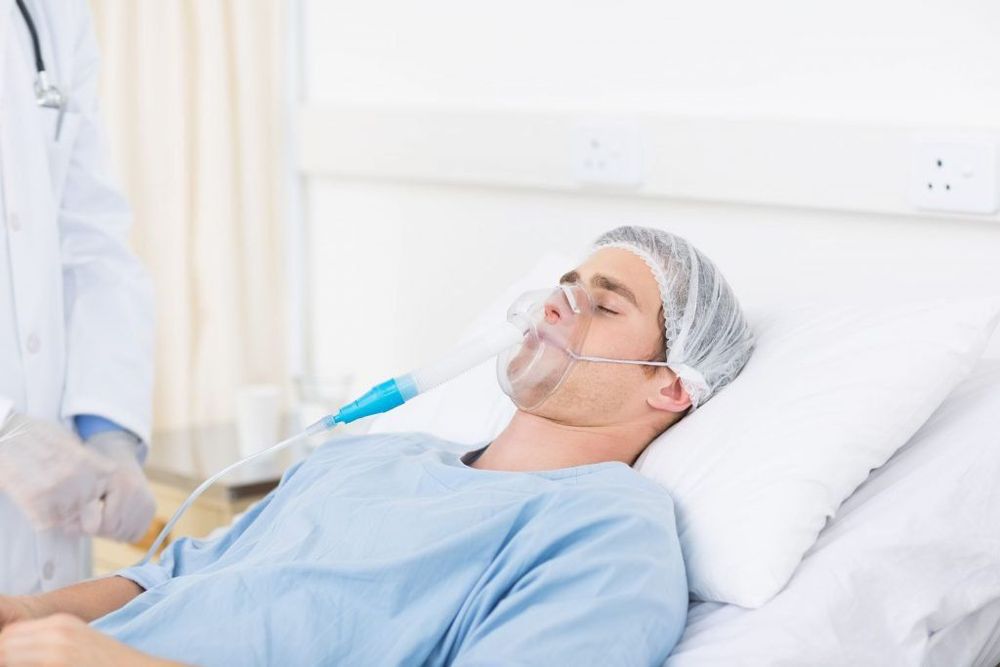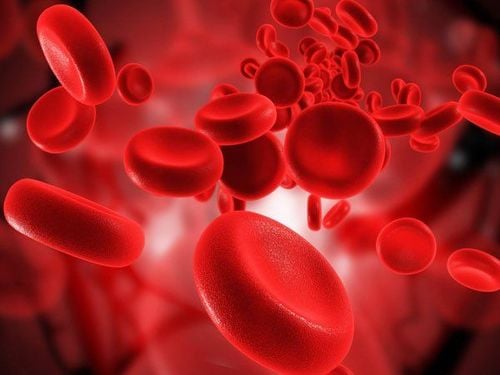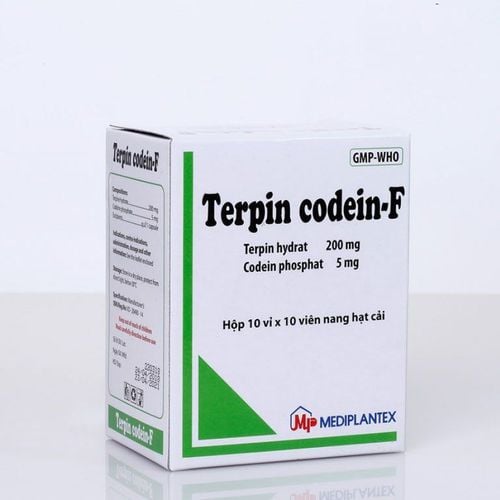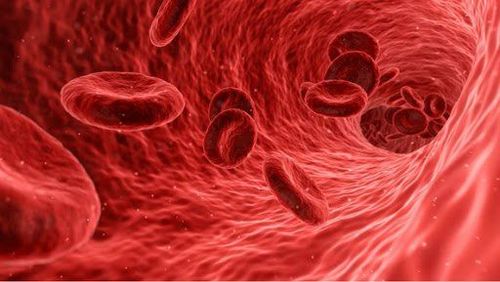This is an automatically translated article.
The article was written by MSc Dang Xuan Cuong - Emergency Medicine Doctor, Emergency Department - Vinmec Hai Phong International General HospitalCurrently, oxygen therapy is widely used in the treatment of respiratory failure. Depending on the cause of the lack of oxygen, the doctor will prescribe oxygen therapy to suit the patient's condition.
1. What is oxygen therapy?
Oxygen therapy is a method applied in medicine to provide breathing air for people with respiratory diseases, especially respiratory failure, patients are breathing with oxygen concentration in the air is greater than 21 %.
Under normal conditions, the air is composed of oxygen (20.95%), carbon dioxide (0.03%) and nitrogen (79.02%). With this ratio, humans can breathe and live. However, some patients experience hypoxia, which affects the functioning and development of cells and organs in the body. Therefore, oxygen therapy is indicated to help patients maintain normal life activities.
Possible causes of hypoxia include:
Obstruction of the airways: ingestion of foreign bodies, choking, tumors in the respiratory tract, excessive secretions of the respiratory tract, throat suffering from swelling, some diseases such as diphtheria, asthma, bronchitis, pneumonia, ... The chest is limited in volume: due to trauma causing broken ribs, scoliosis, effusion, pneumothorax , Air diffusion in the lungs is impeded: due to diseases such as pneumonia, pulmonary edema, bronchitis, emphysema. Some diseases reduce blood oxygen due to disordered circulation and transport of oxygen such as anemia (in quantity and quality), congenital heart disease, heart failure.
2. In what cases is oxygen therapy indicated?
Oxygen therapy is indicated in the following cases:
The patient is suspected of hypoxemia or hypoxemia with manifestations such as shortness of breath, shortness of breath, rapid breathing, restlessness, heart palpitations or disturbances. heart rate, blood pressure increased, nerve disorder, disorientation. If hypoxemia is severe, the patient may have cyanosis, slow breathing or sometimes stop breathing, low blood pressure, impaired consciousness. Patients with heart failure, acute myocardial infarction. Patients with trauma or surgery, have signs of suspected hypoxia.

Liệu pháp oxy chỉ định trong trường hợp người bệnh nghi ngờ thiếu oxy trong máu hoặc bị giảm oxy má
3. How is oxygen therapy used?
3.1 Principles of using oxygen therapy
Use the right dose: Oxygen therapy needs to be used as directed with the appropriate dose, it is necessary to use the minimum oxygen flow to achieve the desired effect, avoiding using too high a dose of oxygen can oxygen poisoning. Prevention of infection: When using oxygen therapy, the possibility of infection will be higher because bacteria often grow quickly in an oxygen environment, thereby easily entering the damaged respiratory system. To limit and prevent infection for patients, it is necessary to ensure sterilization of instruments after each breath. replacing catheters, cleaning the patient's mouth To prevent dryness of the respiratory tract: The oxygen cylinders are dry gas, so it is easy to dry the cells of the respiratory tract mucosa. Therefore, inhaled oxygen should be moistened with a sterile solution and be sure to add enough water to the humidifier. Fire and explosion prevention: The patient's area using oxygen therapy should limit smoking and fire, the patient himself should not smoke and use flammable items in the breathing area, use a ground wire with electrical equipment to avoid sparking in this area to prevent fire and explosion.
3.2 What means of oxygen delivery does oxygen therapy have?
Patients assigned to oxygen therapy can receive oxygen through 3 delivery means: nasal cannula, mask and tent. Depending on the condition of each patient and the amount of oxygen that needs to be provided, the patient will be given the appropriate method.
Oxygen through the nasal cannula: Oxygen through the nasal cannula is applied to patients with mild hypoxia and still in a conscious state. The advantage of this device is that it is easy for the patient to accept because it is possible to eat, drink or talk while breathing oxygen. However, nasogastric oxygen therapy has limitations such as: (1) it cannot accurately measure the inhaled oxygen concentration because it depends on the patient's breathing pattern and volume, and (2) it cannot be achieved. maximum oxygen concentration when breathing, (3) air flow is limited to a maximum of about 5 - 6 liters / min, if used in excess, it may not increase efficiency, on the contrary, it also causes the risk of overflowing air. gastric dilatation, (4) easy to block the tube due to secretions in the airways, (5) difficult to warm breathing air. Mask oxygen: Mask oxygen therapy is often used in emergency situations, or when the patient has respiratory damage in the nose and pharynx. Mask oxygen is a means of delivering oxygen at a higher concentration than a nasal cannula, possibly up to 90%. However, the oxygen concentration is usually specified as no more than 60% to ensure no oxygen poisoning. Tent Oxygen: Tent oxygen therapy is indicated for patients who do not respond to the above 2 techniques or for patients who are children. Note that when using oxygen through the tent, it is necessary to ensure that the air pressure is positive inside the tent, in case the tent is open, leading to a decrease in the oxygen concentration inside. During use, it is necessary to regularly monitor and adjust temperature and humidity to ensure that CO2 does not accumulate in the tent, and at the same time, clean the tent after use.
3.3 Some limitations and complications of oxygen therapy
Although considered an effective therapy in the treatment of respiratory failure, however, oxygen therapy has the following limitations:
For patients with hypoxia due to circulatory failure or anemia, this method is effective. low fruit. For patients indicated for artificial ventilation, oxygen therapy is not an alternative.

Hạn chế của liệu pháp thở oxy là không thay thế được thông khí nhân tạo
Besides, if used incorrectly as indicated and in dosage, oxygen therapy can cause some complications such as:
Oxygen poisoning: If the patient breathes oxygen with high concentration (>60%) and in the long run will lead to oxygen poisoning. Atelectasis: In respiration, nitrogen plays an important role in keeping the alveoli from collapsing during expiration. If the patient breathes high concentration of oxygen, it will cause nitrogen gas in the alveoli to be pushed out, causing alveolar collapse, leading to atelectasis. Retinopathy of prematurity: Premature babies who are given oxygen at high concentrations have a higher risk of retinal diseases such as retinal detachment and blindness. Bacterial superinfection: When using oxygen therapy, if breathing apparatus, humidifiers, or aerosol systems intended for the patient are not properly cleaned, or are not sterile, sterilization will facilitate allowing bacteria to enter the respiratory tract causing superinfection. In order for oxygen therapy to be highly effective in the treatment of respiratory failure, patients need to use it according to the technical indications as well as the dosage, to ensure their own safety. To do this, patients should choose reputable hospitals to perform.
Currently, at Vinmec International General Hospital, oxygen therapy is used in emergency and urgent cases to avoid complications of respiratory failure affecting the patient's health. In addition, this is also the address for examination, treatment and prevention of many diseases with optimal results thanks to modern technical facilities, a team of dedicated, professional and dedicated doctors. profession.
Please dial HOTLINE for more information or register for an appointment HERE. Download MyVinmec app to make appointments faster and to manage your bookings easily.













